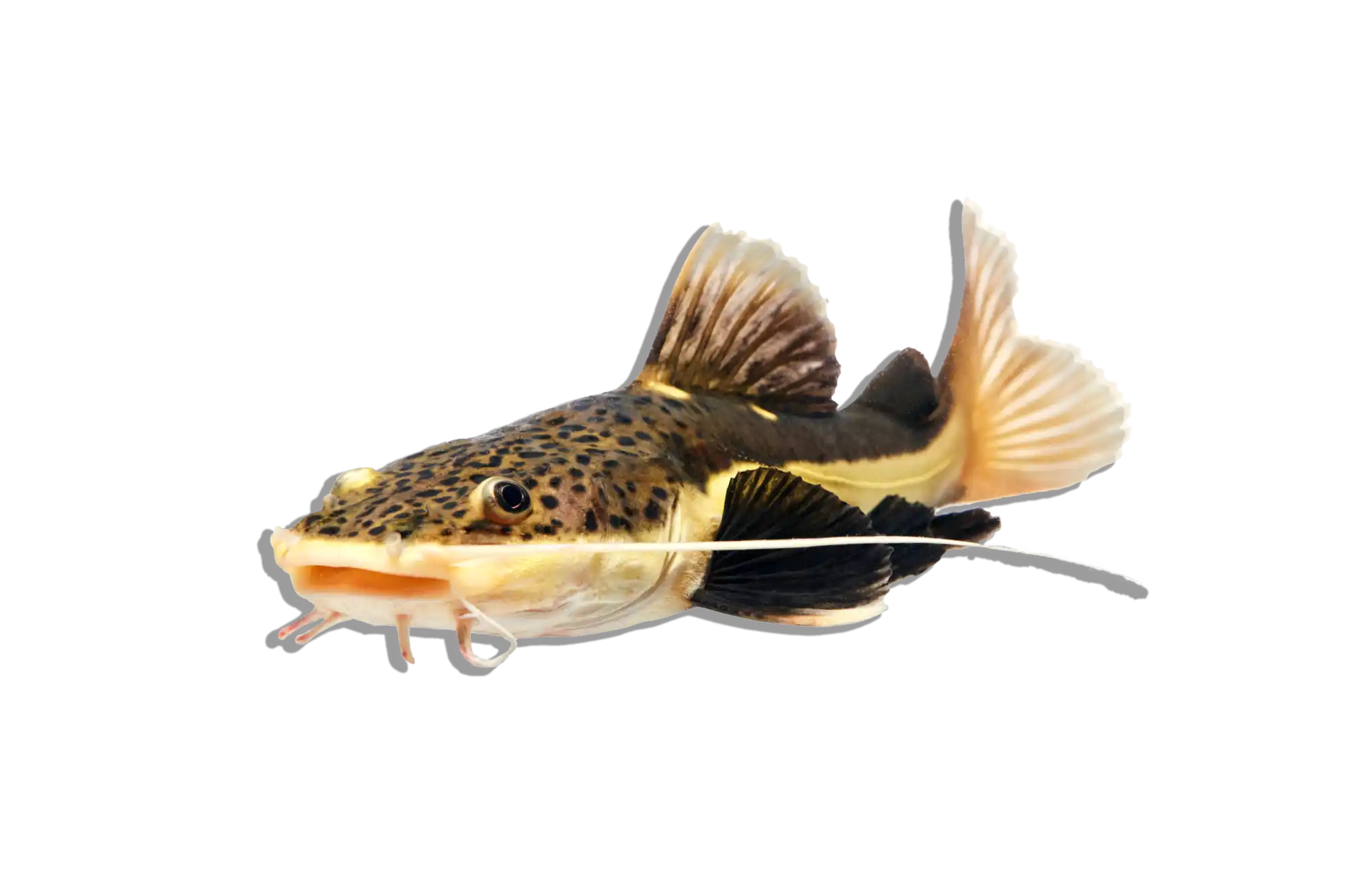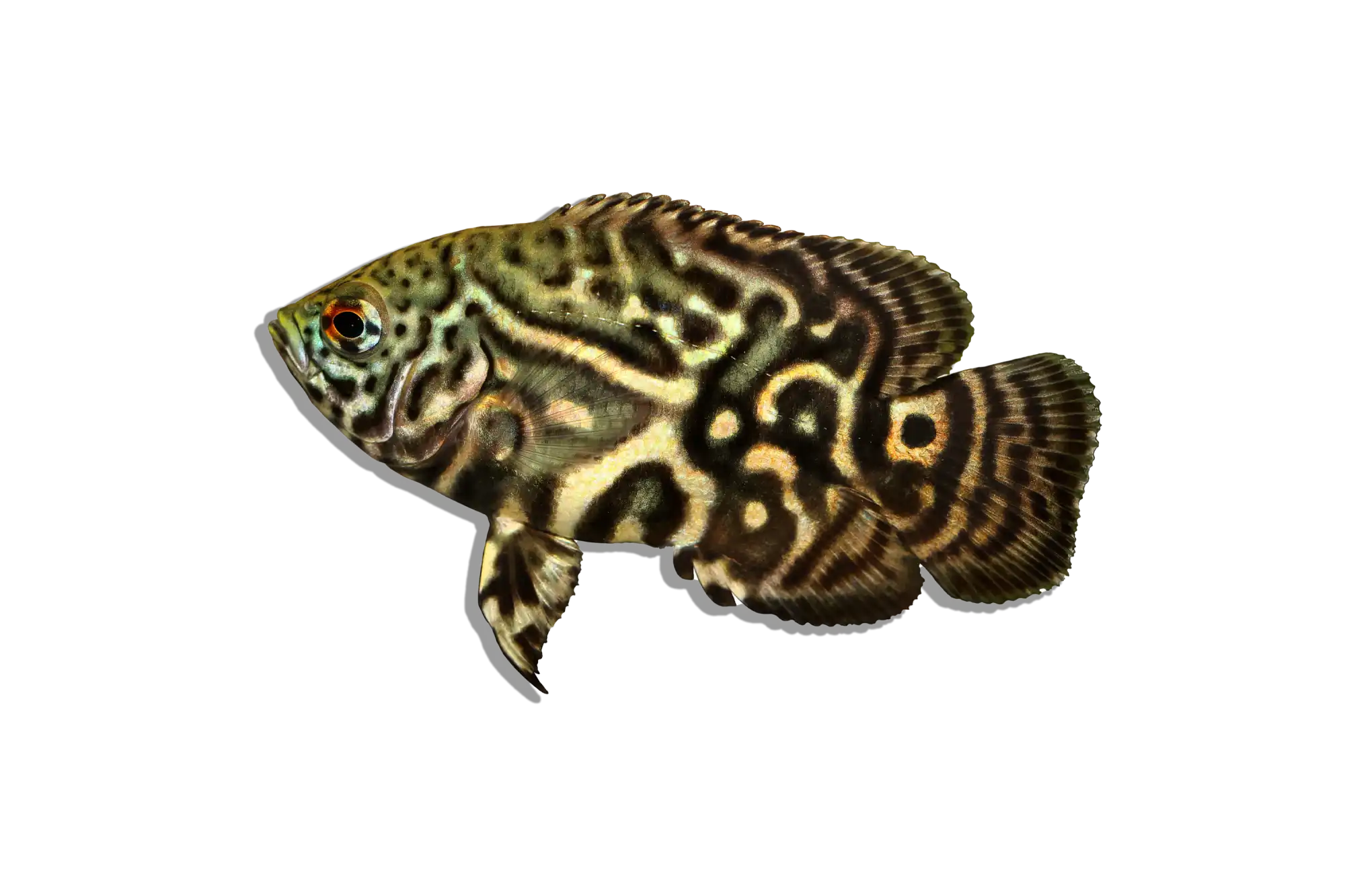Description
Common Name: True Pygmy Cory Catfish
Scientific Name: Corydoras pygmaeus
Other Names: Pygmy Cory, Pygmy Catfish
The True Pygmy Cory Catfish is a small, peaceful freshwater fish known for its gentle nature and active schooling behavior. Unlike many other corydoras species, which spend most of their time on the substrate, the Pygmy Cory often swims in the midwater column, adding dynamic movement to the aquarium. Their small size, attractive silver coloration with a dark horizontal stripe, and ease of care make them a popular choice for nano and community tanks.
Habitat and Distribution: The True Pygmy Cory Catfish is native to the slow-moving rivers and tributaries of the Amazon Basin in South America, specifically found in Brazil. These fish inhabit areas with dense vegetation and plenty of leaf litter, providing ample cover and foraging opportunities. The water in their natural habitat is typically warm, soft, and slightly acidic to neutral.
Size and Lifespan: In captivity and the wild, Pygmy Cory Catfish typically grow to about 1 inch (2.5 cm) in length. Their lifespan can range from 3 to 5 years, depending on the care and conditions provided in the aquarium. Maintaining optimal water quality, a balanced diet, and a suitable environment are crucial for their longevity.
Diet and Behavior: Pygmy Cory Catfish are omnivorous, feeding on a variety of foods in the wild, including small invertebrates, plant matter, and detritus. In an aquarium, they should be provided with a varied diet of high-quality sinking pellets, micro-pellets, and live or frozen foods such as brine shrimp, daphnia, and microworms. These fish are social and thrive in groups of six or more, displaying natural schooling behavior. They are active during the day and are known for their playful swimming patterns, often seen darting around the tank or resting on plant leaves.
Breeding and Reproduction: Breeding Pygmy Cory Catfish in captivity is relatively straightforward compared to other species. They are egg scatterers, and successful breeding typically requires a well-maintained tank with optimal water conditions, including slightly cooler water to stimulate spawning. The female will lay eggs on plant leaves, aquarium glass, or other surfaces, and the male will fertilize them. There is no parental care for the eggs or fry, so a separate breeding tank or protective measures are necessary to prevent the eggs from being eaten by other fish.
Aquarium Care and Tank Requirements: To keep Pygmy Cory Catfish, a small aquarium of at least 10 gallons is suitable, although larger tanks are preferred to accommodate a school of fish. The tank should include plenty of plants, driftwood, and hiding spots to mimic their natural habitat and reduce stress. A fine substrate, such as sand or smooth gravel, is ideal to protect their delicate barbels. Gentle water flow and efficient filtration are essential to maintain water quality. Regular water changes are crucial to keep the environment clean and stable.
Ideal Tank Mates: Pygmy Cory Catfish can be kept with other small, peaceful fish that share similar water parameter requirements. Suitable tank mates include small tetras, rasboras, and other small peaceful fish. Avoid housing them with larger, aggressive fish that might see them as prey or outcompete them for food.
Difficulty Level: Beginner to Intermediate. Pygmy Cory Catfish are hardy and adaptable, making them suitable for aquarists of all experience levels. Their small size and peaceful nature require attentive care and a well-maintained aquarium to thrive.
Water Parameters:
- Temperature: 72-79°F (22-26°C)
- pH: 6.0-7.5
- General Hardness (GH): 2-12 dGH
- Carbonate Hardness (KH): 1-8 dKH
- Ammonia: 0 ppm (ideal), up to 0.25 ppm (max)
- Nitrite: 0 ppm (ideal), up to 0.25 ppm (max)
- Nitrate: <20 ppm (ideal), up to 40 ppm (max)
Additional Information:
- The True Pygmy Cory Catfish's small size and schooling behavior make it a delightful addition to nano and community tanks, adding both activity and interest.
- These fish are known for their ability to quickly adapt to a variety of tank conditions, making them a resilient species in the aquarium hobby.
- In their natural habitats, Pygmy Cory Catfish play a role in keeping the substrate clean by sifting through the sand and consuming detritus, contributing to the overall health of the aquatic ecosystem.
- Fun fact: Pygmy Cory Catfish are known to make short trips to the water surface to gulp air, a behavior common among corydoras species, allowing them to survive in low-oxygen environments.



















